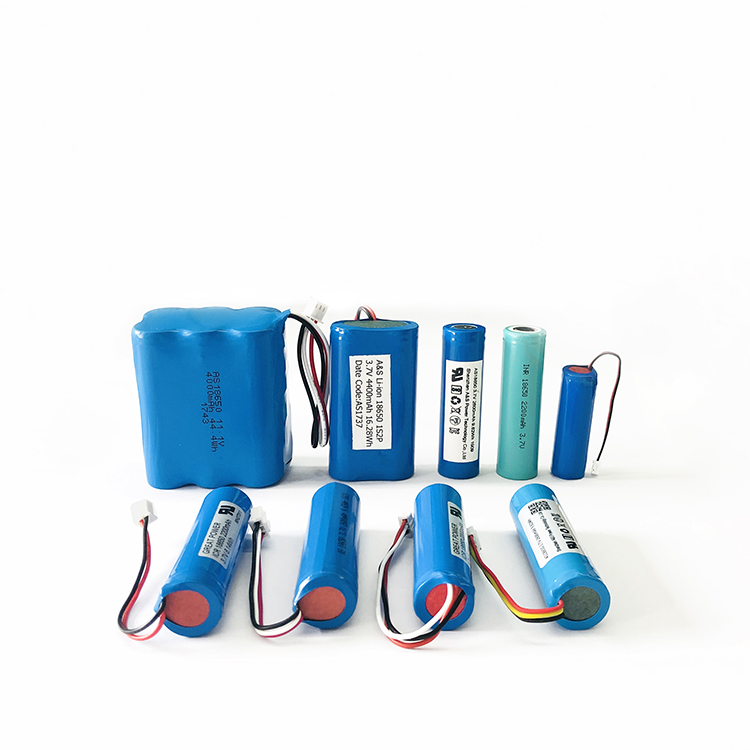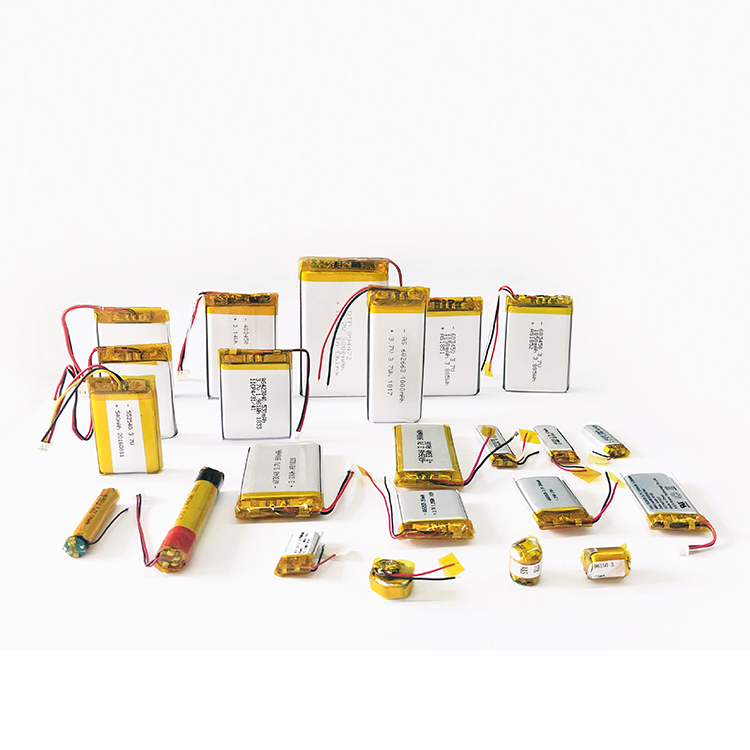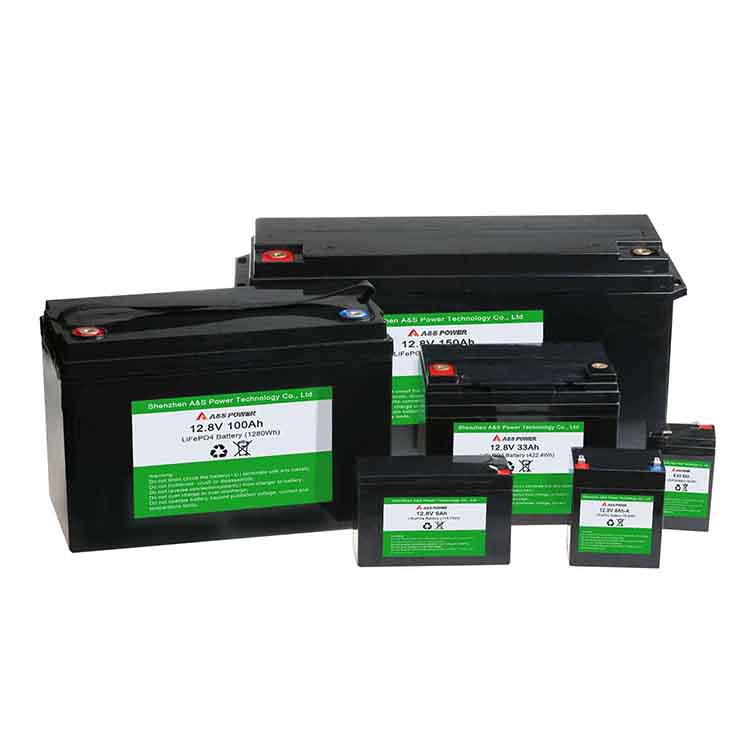Battery
Application
Hot product
Contact us
Battery Storage
2021-07-02
The optimum storage conditions for batteries depend on the active chemicals used in the cells. During storage the cells are subject to both self discharge and possible decomposition of the chemical contents. Over time solvents in the electrolyte may permeate through the seals causing the electrolyte to dry out and lose its effectiveness. In all cases these processes are accelerated by heat and it is wise to store the cells in a cool, benign environment to maximise their shelf life. The glove compartment of a car does not qualify as a suitable storage location since temperatures may exceed 60°C shortening dramatically the life of the battery.
For cells with the same nominal cell chemistry, individual manufacturers may add different additives to optimise their cell performance for a particular parameter and this may affect the behaviour of the cells during storage. It is possible to make some general recommendation about storage but the best guidance for storage is to consult the manufacturers' specifications and recommendations for their products. Some general guidelines for some common cell chemistries follow:
Primary Cells
Storage conditions are particularly important for primary cells because they can not be recharged and any capacity loss is therefore permanent. While it is always recommended to keep cells cool during storage, keeping them refrigerated is even better. A temperature range of 0°C to 10°C is preferable to avoid freezing of the aqueous electrolyte. For prolonged storage the cells should be stored in vapour proof packing should help to alleviate the problem of electrolyte loss.
Rechargeable Cells
Lead Acid
When a lead acid battery is fully or partially discharged, lead sulphate forms at the electrodes. If the battery is allowed to remain for a prolonged period in a discharged state or with a very low state of charge the lead sulphate may form into large crystals which are very difficult to convert back into lead and sulphuric acid by the charging process. The formation of these crystals is called sulphation and causes a permanent loss of capacity of the battery. To avoid this problem lead acid batteries should therefore only be stored in a fully charged condition and the charge should be topped up from time to time during storage to compensate for the self discharge of the cells.
To prolong shelf life without charging, the batteries should be stored at 10°C or less but the electrolyte should not be allowed to freeze. When the battery is fully charged the electrolyte is sulphuric acid solution and the freezing point is -36°C but it rises to 0°C in the fully discharged state when the electrolyte is simply water.
Nickel Cadmium
Nickel Cadmium batteries can be stored in either a charged or discharged state. Long term storage can accelerate battery self-discharge, and lead to the deactivation of reactants. Although the cells can be stored at temperatures between -20°C and +45°C, as with almost all batteries heat can cause deterioration of the active chemicals and it is better to keep the cells in a cool, clean, dry, non-corrosive environment. After prolonged storage, two or three deep discharge cycles may be needed to restore full capacity.
Nickel Metal Hydride
Nickel Metal Hydride batteries have similar characteristics to Nickel Cadmium cells. They can be stored in a charged or discharged state and have similar storage requirements. Because NiMH cells have a higher self discharge rate than NiCad cells, they will lose more charge during storage and will most likely need charging before they can be used.
Lithium-Ion
The possible storage temperature range for Lithium-Ion batteries is is -20°C to 60°C but for prolonged storage period -20°C to 25°C is recommended and 15°C is ideal. Cells should be stored with a partial charge of between 30% and 50%. Although the cells can be stored fully discharged the cell voltage should not drop below 2.0 Volts per cell and cells should be topped up to prevent over-discharge. The maximum voltage should not exceed 4.1 Volts


For cells with the same nominal cell chemistry, individual manufacturers may add different additives to optimise their cell performance for a particular parameter and this may affect the behaviour of the cells during storage. It is possible to make some general recommendation about storage but the best guidance for storage is to consult the manufacturers' specifications and recommendations for their products. Some general guidelines for some common cell chemistries follow:
Primary Cells
Storage conditions are particularly important for primary cells because they can not be recharged and any capacity loss is therefore permanent. While it is always recommended to keep cells cool during storage, keeping them refrigerated is even better. A temperature range of 0°C to 10°C is preferable to avoid freezing of the aqueous electrolyte. For prolonged storage the cells should be stored in vapour proof packing should help to alleviate the problem of electrolyte loss.
Rechargeable Cells
Lead Acid
When a lead acid battery is fully or partially discharged, lead sulphate forms at the electrodes. If the battery is allowed to remain for a prolonged period in a discharged state or with a very low state of charge the lead sulphate may form into large crystals which are very difficult to convert back into lead and sulphuric acid by the charging process. The formation of these crystals is called sulphation and causes a permanent loss of capacity of the battery. To avoid this problem lead acid batteries should therefore only be stored in a fully charged condition and the charge should be topped up from time to time during storage to compensate for the self discharge of the cells.
To prolong shelf life without charging, the batteries should be stored at 10°C or less but the electrolyte should not be allowed to freeze. When the battery is fully charged the electrolyte is sulphuric acid solution and the freezing point is -36°C but it rises to 0°C in the fully discharged state when the electrolyte is simply water.
Nickel Cadmium
Nickel Cadmium batteries can be stored in either a charged or discharged state. Long term storage can accelerate battery self-discharge, and lead to the deactivation of reactants. Although the cells can be stored at temperatures between -20°C and +45°C, as with almost all batteries heat can cause deterioration of the active chemicals and it is better to keep the cells in a cool, clean, dry, non-corrosive environment. After prolonged storage, two or three deep discharge cycles may be needed to restore full capacity.
Nickel Metal Hydride
Nickel Metal Hydride batteries have similar characteristics to Nickel Cadmium cells. They can be stored in a charged or discharged state and have similar storage requirements. Because NiMH cells have a higher self discharge rate than NiCad cells, they will lose more charge during storage and will most likely need charging before they can be used.
Lithium-Ion
The possible storage temperature range for Lithium-Ion batteries is is -20°C to 60°C but for prolonged storage period -20°C to 25°C is recommended and 15°C is ideal. Cells should be stored with a partial charge of between 30% and 50%. Although the cells can be stored fully discharged the cell voltage should not drop below 2.0 Volts per cell and cells should be topped up to prevent over-discharge. The maximum voltage should not exceed 4.1 Volts


If secondary cells must be for a prolonged period the state of charge should be checked regularly and provision should be made for recharging the cells before the cell voltage drops below the recommended minimum after which the cells suffer irreparable deterioration. ( This is particularly true for battery packs which may have associated electronics which add to the self discharge drain on the cells)












